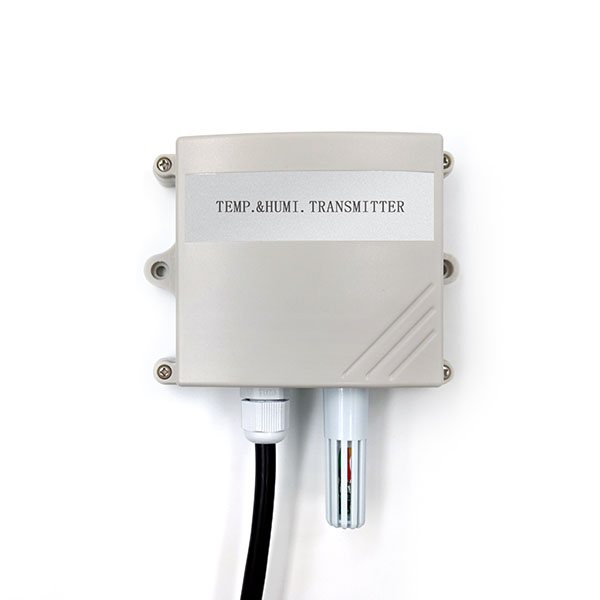What does the ambient temperature sensor do?
A temperature sensor is a sensor that senses changes in temperature and converts them into a usable output signal. A temperature sensor is the core of a temperature measuring instrument and its function is to convert the ambient temperature and relative humidity into a standard analog signal. This article focuses on what does the ambient temperature sensor do and its uses.
What does the ambient temperature sensor do?
1, the temperature sensor can detect the ambient temperature, and through the resistance, current, voltage, digital and other output methods output signal to the display table, the realization of the field display of temperature data;
2, the temperature sensor can transmit the data to the collector, through the software to realize the scene display temperature data, storage history, output data analysis chart or corresponding calculations, control heating and cooling equipment;
3, temperature sensors are essential equipment for environmental monitoring, under certain circumstances can be realized by monitoring the temperature of pressure, humidity and other parameters of the monitoring;
4, temperature sensors can detect subtle temperature changes;
5, temperature sensors milliseconds response time is suitable for a variety of temperature monitoring environment.
The uses of temperature sensors are as follows
(1) Temperature sensors in refrigerators. When the temperature in the refrigerator is higher than the set value, the refrigeration system starts automatically; and when the temperature is lower than the set value, the refrigeration system stops automatically. The control of refrigerator temperature is realized by the temperature sensor.
(2) temperature sensors in the car. Automotive sensors are an important part of the automotive electronic equipment, responsible for the task of information collection. In the automobile electric injection engine system, automatic air conditioning system, temperature is one of the important parameters to be measured and controlled. Measurement of the thermal state of the engine, gas and liquid temperature measurement, all need temperature sensors to complete. Therefore, automotive temperature sensors are essential. As the engine works in high temperature (engine surface temperature up to 150 ℃, exhaust manifold up to 650 ℃), vibration (acceleration 30g), shock (acceleration 50g), humidity (100% RH, -40 ℃ -120 ℃), as well as steam, salt spray, corrosion and sludge contamination of harsh environments, the engine control system sensor resistance to harsh environments, therefore, the technical indicators should be higher than the general industrial humidity and temperature sensor 1-2 orders of magnitude higher, of which the most critical is the measurement accuracy and reliability. Otherwise, the measurement error brought about by the sensor will ultimately lead to the engine control system is difficult to work properly or failure. Temperature sensor is mainly used to detect the engine temperature, inhalation gas temperature, cooling water temperature, fuel temperature and catalytic temperature.
(3) Temperature sensors in household appliances. Temperature sensors are widely used in household appliances (microwave ovens, air conditioners, hoods, hair dryers, toasters, induction cookers, frying pans, heaters, refrigerators, freezers, water heaters, water fountains, dishwashers, disinfecting cabinets, washing machines, dryers, and low and medium-temperature drying box, thermostat and other occasions such as temperature measurement and control, etc.), medical/domestic thermometers, portable non-contact infrared temperature thermometers, and so on in many ways.
(4) medical instruments and equipment in the temperature sensor. Medical application of a variety of sensors on the human body temperature, blood pressure and intracavitary pressure, blood and respiratory flow, heart and brain waves, pulse and heart sound, etc., high accuracy detection, timely feedback of the results of the treatment, to achieve the patient’s automatic detection and monitoring.
(5) Temperature sensors in robots. Robots are becoming more and more intelligent, originating from the fact that robots apply many sensors to control and monitor their behavior, such as position sensors, speed sensors, tactile sensors, visual sensors, olfactory sensors and so on.
(6) Temperature sensors in aerospace. Aircraft, rockets, spacecraft and other vehicles use a variety of sensors to detect flight speed, direction, distance and flight attitude in order to make accurate measurements.
In addition, temperature sensors are used in a wide range of applications, such as industrial and agricultural production, electronic products, automotive, aerospace, marine, medical, smart home and so on. Their main roles are temperature measurement, temperature compensation, flow rate, flow and wind speed determination, liquid level indication, temperature measurement, UV and IR light measurement, microwave power measurement and so on.







